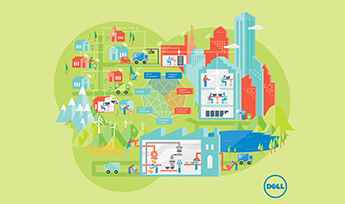Dell is devoted to build green factory
Dell owned factory are addressing on building green and sustainable factory as well as green supply chain sustainability development
84.36
Total Possible Score: 1006
Out of 779 total brands1
Out of 72 total brands in the IT/ ICT industry79.00
Total Possible Score: 1008
Out of 1951 total brands5
Out of 170 total brands in the IT/ ICT industryThe total score of the company's Corporate ClimateAction CATI Index evaluation is converted by a factor of 20% to Indicator 4.1 of the Green Supply Chain CITI Index.
As carbon hotspots vary from industry to industry, a weighting factor applies across four of the five CATI activity areas: Measurement & Disclosure (15%; Indicator 2.3.1 (6%) does not apply), Carbon Targets Setting (14%), Performance against Carbon Targets (12%) and Climate Action (43%). The default weighting factors for each industry are shown in the CATI Evaluation Guidelines.

Dell global supply chain is addressing increasing energy efficiency for small & middle scale manufacturing factories with the fact of low energy management awareness, energy management resource scarcity, weak energy management capability.

Dell, the Natural Resources Defense Council (NDRC) and the Suzhou Institute of Energy Management jointly launched the Energy Management Capacity Building Project at the beginning of 2016, targeting medium- and small-scale suppliers with relatively weak energy management capabilities. The project divides energy management capacity building into the following stages.

Mitigating water risks is one of the key long-term goals of Dell's 2020 "Legacy of Good" Plan. Since 2015, Dell has devoted efforts to promoting supply chain water risk control, and plans to encourage 250 to 300 water-intensive suppliers to join its water risk mitigation project by 2020. By adopting a water risk mitigation plan, Dell ensures that supply chain water risks are effectively managed.